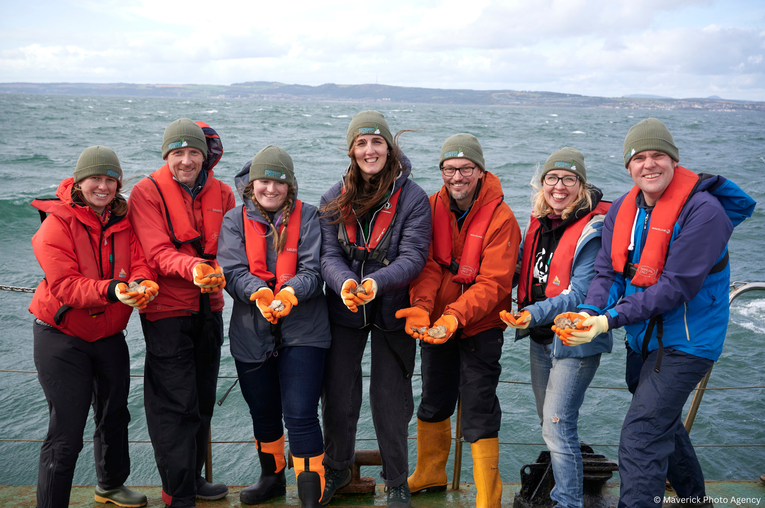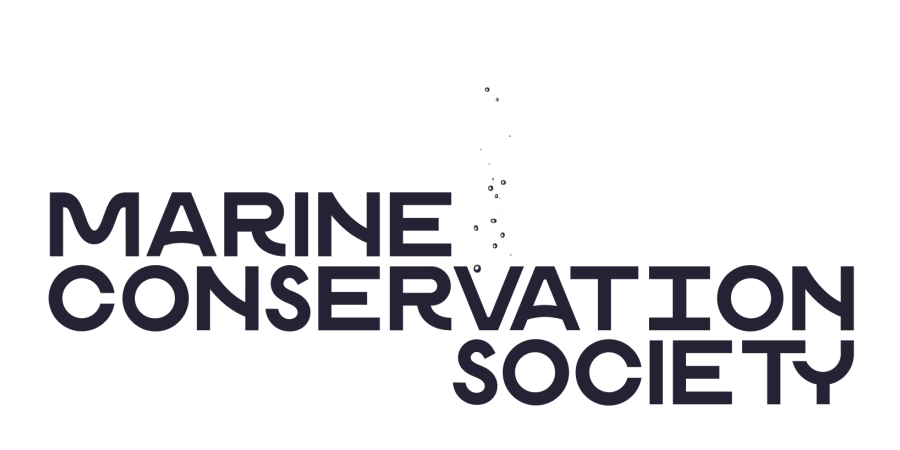
Marine natural capital
Marine natural capital refers to ocean ecosystems that provide vital support to our economy and wellbeing. It is the foundation of a sustainable blue economy and essential to a resilient future.
What is marine natural capital?
Marine natural capital refers to the natural resources in the ocean that deliver economic value and additional benefits to society through the services that nature provides. These benefits include providing food and raw materials, regulating our climate, or supporting leisure and recreation opportunities. The UK has a particularly vast marine territory which is home to a range of valuable marine natural capital assets. This extends from coastal habitats like seagrass meadows, to the creatures living in the sea, or even the seabed itself.
By creating cleaner, healthier seas we can protect and enhance our marine natural capital. This will create economic opportunities and resilience as we head into the future. To do this, marine natural capital needs to be at the heart of our economic planning, marine policy and financial decision making.
Can we place a value on nature?
There is some debate around whether it is appropriate to place a value on nature. Mankind is entirely dependent on our planet’s natural ecosystems. They generate the oxygen we breathe and provide food and water while ensuring a habitable climate. Nature – and particularly the ocean – is our life support system. In this regard, the value of natural ecosystems will always be infinite.

Credit: Francois Baelen/ OceanImageBank
However, the natural capital approach does not necessarily attempt to capture the complete value of an ecosystem. It rather attempts to convey the value of some of the benefits that the ecosystem provides. When used appropriately this can offer a practical tool for informing policy measures or assessing the impact of decisions in the marine environment. This can highlight value within marine ecosystems that may not otherwise be considered.
For example, coastal and marine habitats are gaining increasing attention as we try to deal with the effects of a warming climate. Seagrass and saltmarsh are two of the most effective habitats on earth for storing carbon. They can store more carbon per area than a tropical rainforest and at a much faster rate of burial. Against rising sea-levels, the presence of coastal habitats can save up to an estimated £33.1 billion of spending on manmade protection against coastal erosion and flooding that threatens up to £150 billion of coastal infrastructure.
This provides just one example of how a natural capital approach could be used to make the case for protecting these ecosystems. This approach can be used in addition to - not in place of - the unquestionable ecological need to protect them.
Maintaining and enhancing our marine natural capital
In principle, a lot of our marine natural capital is renewable. These ecosystems will continue to deliver socioeconomic benefits indefinitely and for free – as long as they can sustain themselves.
It is for this reason that we call on governments to increase spending and research into the maintenance of marine natural capital, to ensure that our marine environment can continue to provide these benefits. This echoes recommendations made to the UK Government by the Natural Capital Committee. Maintaining a suitable baseline of marine natural capital provides the current and next generation with options as we head into an unknown future.
We have been degrading our stock of marine natural capital for a long time. Spending or investment is therefore also needed to restore and enhance marine natural capital to a more resilient level. A minimum requirement should be to maintain marine natural capital assets at an appropriate level decided by an independent research body. This requirement should also remain immune to shifting governmental priorities across political cycles.
The infrastructure of a sustainable blue economy
A sustainable blue economy is powered by marine natural capital. We therefore see the maintenance of marine natural capital as a necessary form of public infrastructure spending. This should be the main source of spending, rather than relying solely on private or philanthropic funding.
Targeted spending and policy measures can create the enabling conditions for economic growth, job creation and greater financial resilience. Spending on natural infrastructure will in turn lay the foundations to attract further private investment and create new economic opportunities. A blended finance approach will be key to unlocking these additional opportunities. This is where public funding helps to de-risk and scale up projects sufficiently to make them more financially viable to private investors.
Learn more about the sustainable blue economy here.

Credit: Alev Takil via Unsplash
How can we harness our marine natural capital?
There is currently very little direct spending or investment into ocean recovery in the UK. Given the scale of the socioeconomic, environmental and health benefits that ocean investment generates, much greater levels of spending are justified.
The following list outlines some of the potential areas of spending and policy interventions that could help to maximise the benefits of marine natural capital:
Establishing a baseline of marine natural capital that needs to be maintained.
Funding for research into the mapping, monitoring and valuation of marine natural capital assets would help to establish the baseline and to measure (and monetise) potential enhancement.
Enforcement and monitoring of Marine Protected Areas (MPAs).
On paper, Marine Protected Areas are an important tool for preserving and enhancing marine natural capital. Currently, these sites are not delivering meaningful protection for the ecosystems they are designated to preserve. For example, bottom-contact fishing occurs in 98% of the UK’s offshore MPAs intended to protect valuable seabed habitats. This is explained in our Marine unProtected Areas report.
Improved water treatment infrastructure and enforcement of standards.
The value of marine ecosystems threatened poor water quality eclipses the cost of improving water quality infrastructure. Policy interventions and spending that target water quality issues are essential to preserving and enhancing socioeconomic value. These measures should also include the enforcement of adequate water quality standards.
Financial support for restoration projects and regenerative ocean activities.
Blended finance mechanisms could make regenerative marine projects more economically viable to private investors. In the short term, blended finance mechanisms could be focused on a set of pilot projects to demonstrate proof of concept for private return-seeking investment.
Appropriate Marine Spatial Planning that prioritises the value of marine natural capital.
Funding and capacity should be given towards the scoping and implementation of robust Marine Spatial Planning that prioritises marine natural capital maintenance over the short-term motivations of government cycles. Such an approach also reduces competition and conflict for space, ensuring that development is aligned to the enhancement of marine resources alongside economic gain.
Skills and knowledge building for coastal jobs.
This could include apprenticeships for coastal restoration or jobs within research and monitoring of marine ecosystems. It could be supporting sustainable recreation opportunities and improving the enforcement of environmental protection measures. Job opportunities should be offered first to those living and working in marine and coastal areas, supporting local communities as stewards of the marine environment.
Supporting a Just Transition.
By definition, unsustainable practices cannot be sustained forever. Funding and policy support needs to move away from unsustainable activities that degrade our natural capital and towards regenerative ones. Funding should be made available to incentivise a shift towards more sustainable practices, including compensation for those having to sacrifice long-held livelihoods.

Credit: Maverick Photo Agency
Our work on marine natural capital
We use marine natural capital analysis to inform decision makers and support our campaigns for cleaner, healthier seas. This approach considers the habitats present in our marine environment and the value of ecosystem services that they provide This allows us to consider how decisions impacting the marine environment may affect this value.
Marine Natural Capital At Risk Report
As part of our advocacy against the proposal to remove key environmental protections through the REUL bill, this report provided a summary of the economic value of many aspects of our marine environment that would be at risk. Removing environmental protections, or introducing environmental stressors, threatens the value that the marine environment provides. The principles of this report apply to any threat to the marine environment, including water quality issues and pollution.
Summary
A regenerative approach to marine natural capital will be more sustainable than an extractive approach. It will enable economic growth and resilience while also delivering environmental goals. The foundation for this is capital maintenance. This means preserving marine ecosystems to guarantee the socioeconomic benefits they provide to the current and next generation. This is comparable to necessary infrastructure spending that delivers public benefits several times greater than the costs. With this foundation in place, private investment could also be unlocked to further enhance our stocks of marine natural capital. This in turn presents financial institutions and the private sector with opportunities to protect their financial value and achieve potential returns on investment.

Credit: Sean Oulashin/unsplash
References
- NOAA (2022) Understanding blue carbon. Available at: www.climate.gov
- Macreadie et al. (2013) Loss of ‘Blue Carbon’ from Coastal Salt Marshes Following Habitat Disturbance. PLoS One. doi: 10.1371/journal.pone.0069244.
- Government Office for Science (2018) Foresight Future of the Sea: A report from the Government Chief Scientific Adviser. Available at: www.gov.uk
- Committee on Climate Change (2018) Managing the coast in a changing climate. Available at: www.theccc.org.uk
- Helm, D. (2015) Natural Capital: Valuing The Planet. Yale University Press.
- Natural Capital Committee (2014) The State of Natural Capital: Restoring our Natural Assets: Available at: https://assets.publishing.service.gov.uk
- Solandt and Dunkley (2021) Marine UnProtected Areas. Marine Conservation Society. Available at: www.mcsuk.org



